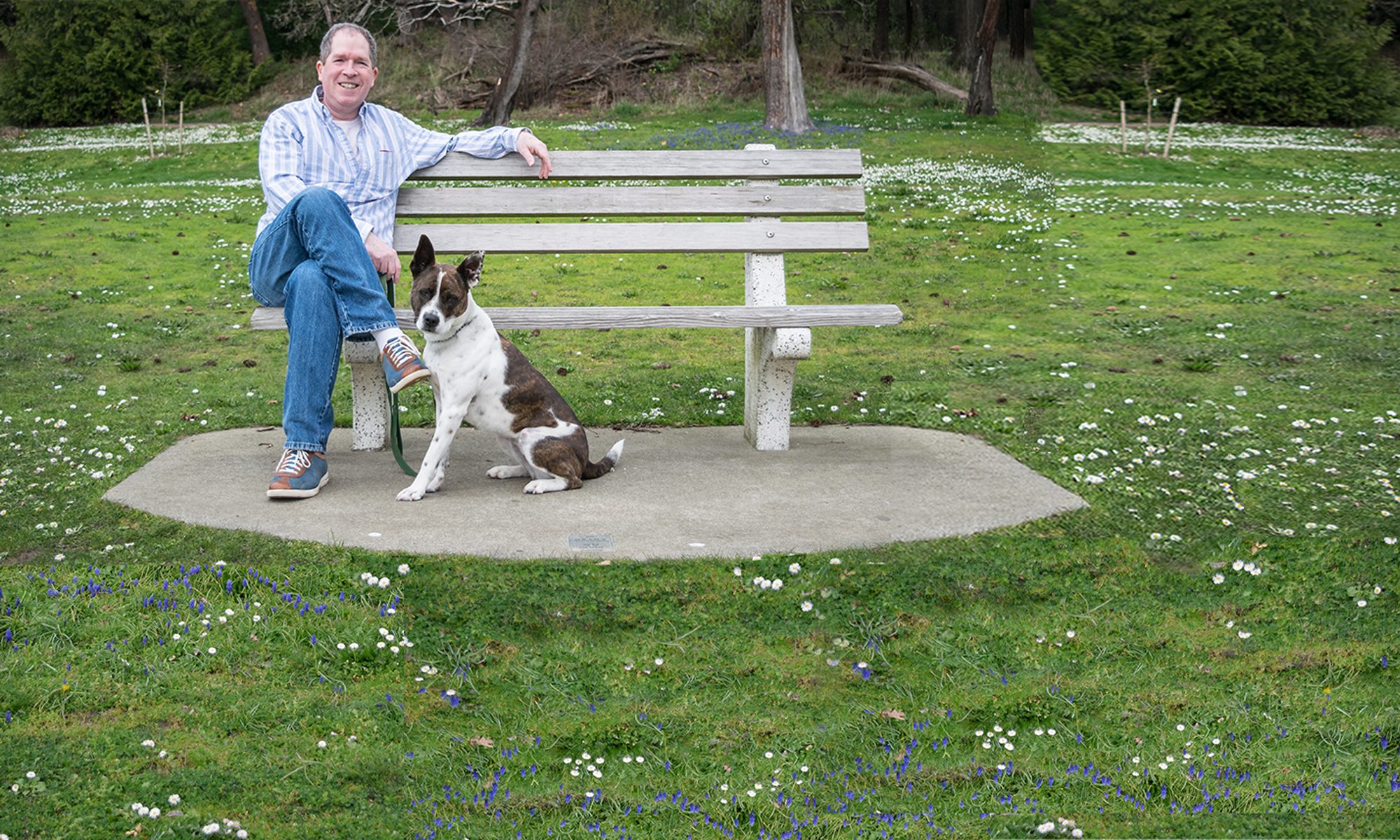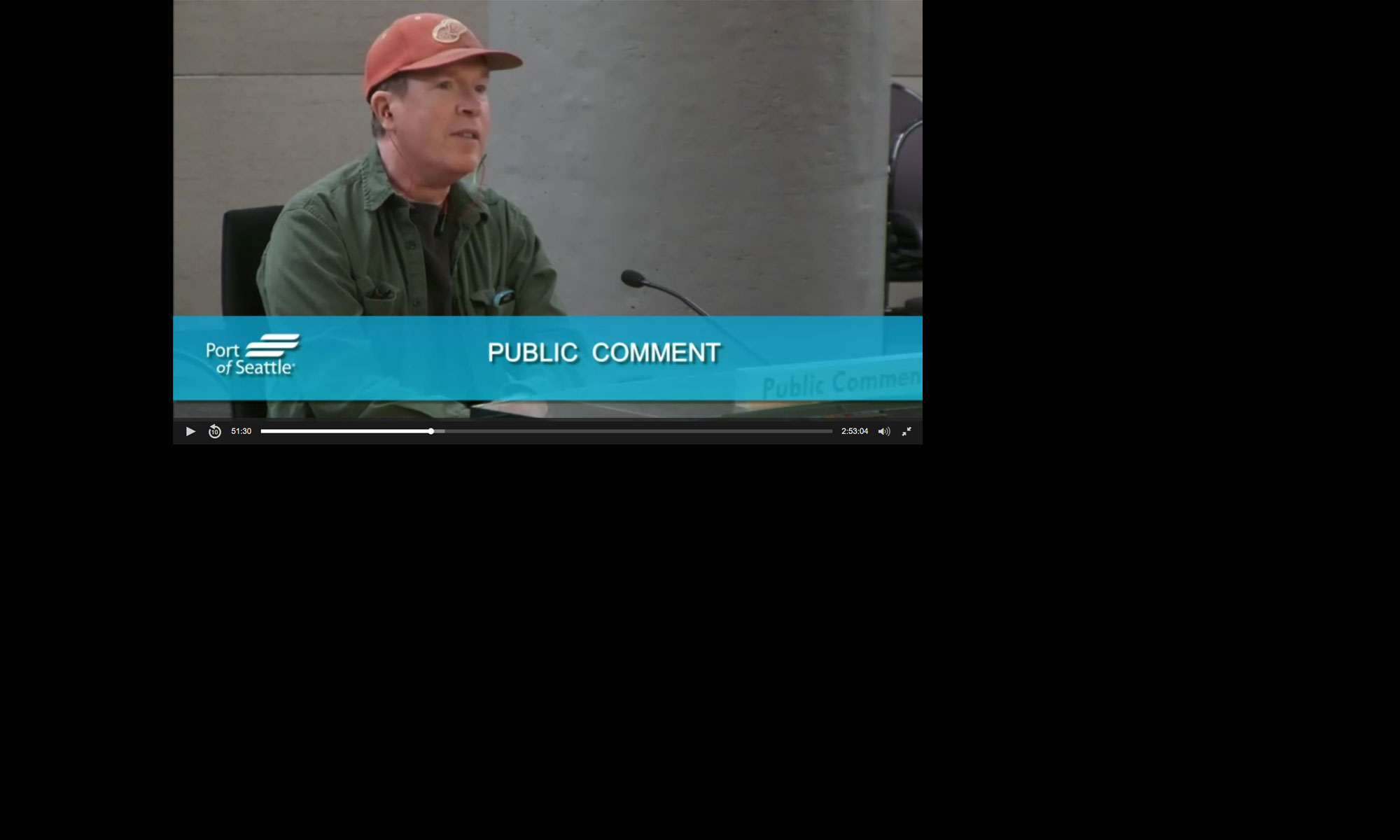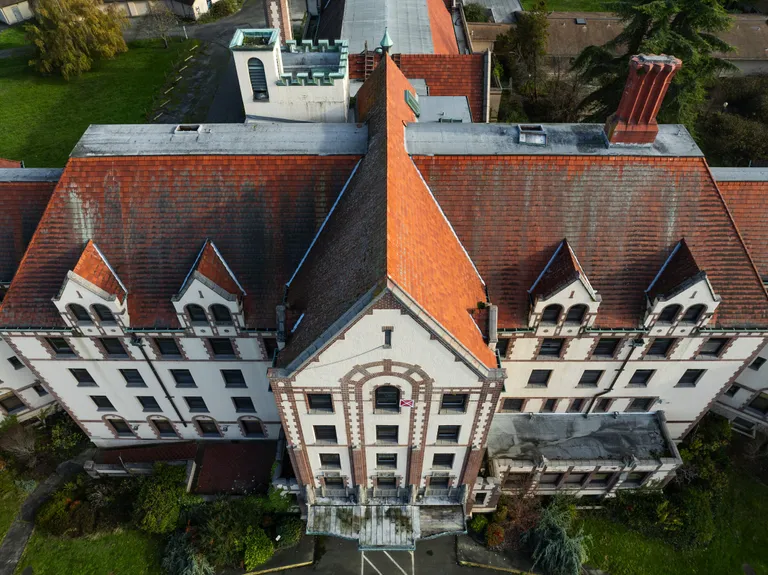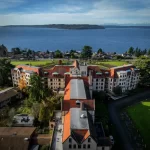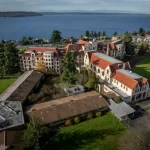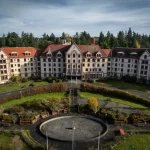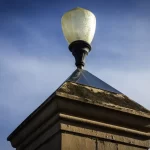To find the place, head south on Marine View Drive through Des Moines, a sleepy little seaside town, picturesque with local seafood restaurants and condos, every window that can manage it staring out at the sea. Just past the marina, you find yourself in a geographic ghost, a neighborhood once considered a township of its own called Zenith, now incorporated into South Des Moines but still graced with its own moniker on Google Maps. And in this memory of a place rises a building that might soon become a memory itself.
The five-story, roughly 118,000-square-foot edifice was constructed by the Freemasons in 1926-27 as a retirement home for elderly members of the brotherhood: a building built by the world’s quintessential builders to house their elders in their twilight years. The upper floors boast a view of the foggy South Sound and the (islands) beyond, so often layered with mist, like a baroque theater set for some grand Masonic mystery play.
The last residents were relocated in 2004 with an eye to building renovation, but the Great Recession skunked those plans, and the place was rented out as an event center until the Masons ultimately sold it in 2019.
NUMBERS:
- 1926-27: year the Landmark on the Sound was built
- 5: number of stories in the building
- 117,930: square footage of the building
- 1,319,850: square footage of the campus
- $11.5 million: price of the 2019 sale
- 1982: year Zenith was incorporated into Des Moines
- 1853: year the first Washington Masonic Lodge was founded
- 1858: year the Grand Lodge of Washington was founded
- 10,437: number of registered Masons in Washington State as of 2021
- Supposedly as many as 21 out of the 56: number of Masons that signed the Declaration of Independence
- roughly 32,000: population of Des Moines
Picturesque old abandoned buildings exist in our imaginations as much as they do in the physical world, and the Landmark, with its carved woodwork and gabled windows, evokes those haunted mansions described by Stephen King or Shirley Jackson. It is impossible to stare at its unblinking windows and not wait breathlessly for a ghostly figure to peek out and wave or wag its finger at you.
